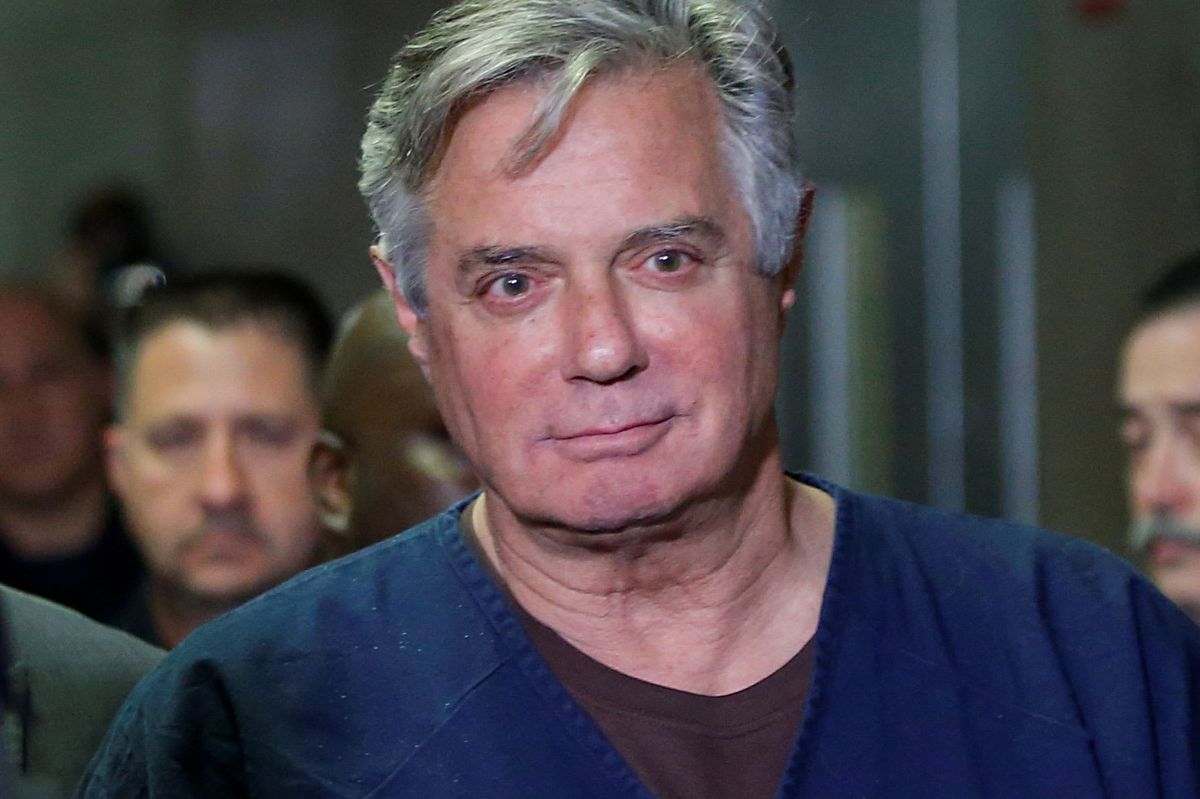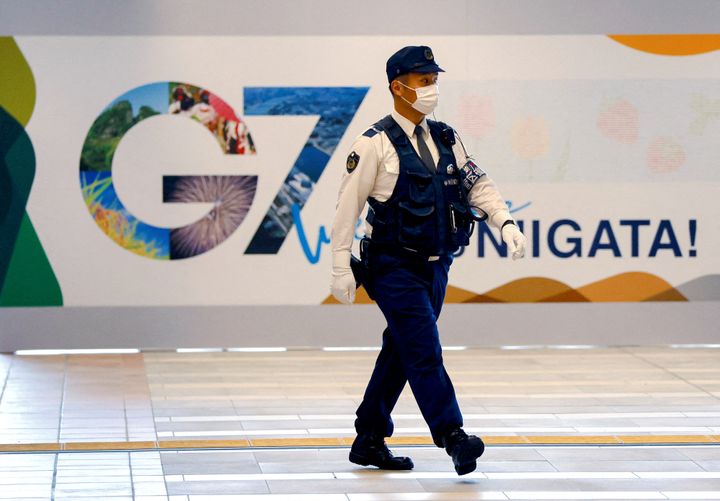Who is Paul Manafort?

A few minutes every morning is all you need.
Stay up to date on the world's Headlines and Human Stories. It's fun, it's factual, it's fluff-free.
Following the 2016 election, Paul Manafort became a household name in a way political consultants rarely do. As the chairman of President Donald Trump’s campaign, Manafort briefly oversaw what would ultimately prove the campaign’s victorious path to the White House. Yet Manafort’s previous work as a political fixer in Ukraine interrupted his victory celebration. In 2018, he was sentenced to nearly eight years in prison.
Manafort’s career as a political fixer, both in the United States and abroad, brought him many powerful allies, including multiple US presidents. Now, though, his decade-spanning political legacy is likely to be overshadowed by his numerous crimes. His role in Russia’s interference in the 2016 election is still being explored, though the full details may never be known.
Paul Manafort’s early years
Paul Manafort, Jr. was born in New Britain, Connecticut in 1949 to Paul Manafort, Sr., a US Army veteran of World War II, and Antoinette Manafort, both now deceased.
Following his graduation from a private Catholic school in New Britain, Manafort studied at Georgetown University in Washington, DC. He received a bachelor’s degree in business administration in 1971, then continued his studies at Georgetown University Law School, where he received his law degree in 1974.
It didn’t take long for Manafort to enter the field in which he would make his name – political consulting. After a four-year stint as a lawyer for the firm Vorys, Sater, Seymour and Pease, Manafort co-founded Black, Manafort, & Stone, a political lobbying firm.
His partners were Charles Black and Roger Stone, the “dirty trickster” and Trump ally who would later be convicted of obstructing a Congressional investigation into whether Trump’s campaign colluded with Russia in the 2016 election.
Stone’s 40-month prison sentence was recently commuted by the president.
Paul Manafort, the political operative
By the mid-1980s, Manafort’s firm was actually two firms: Black, Manafort, Stone & Kelly, a lobbying firm that included Democrat Peter Kelly, and Black, Manafort, Stone & Atwater, a political consulting firm that included Reagan’s deputy campaign manager, Lee Atwater.
(Atwater, who died in 1991, is perhaps best known as the man who used racist, inflammatory language to explain the Republican “Southern Strategy” of appealing to Southern white voters.)
In general, the firm was known simply as Black, Manafort and it was responsible for a variety of backroom political deals.
In 1984, the firm allegedly attempted to persuade the embattled president of the Bahamas, Lynden Pindling, to pay them US$800,000. In return, they would persuade officials in Washington to ease up investigations into Pindling’s involvement with drug traffickers.
In 1986, they took a US$600,000 annual contract to help sell the cause of Jonas Savimbi, an Angolan guerrilla leader, to Washington politicians. It worked. Then-President Ronald Reagan referred to Savimbi and his allies as “freedom fighters” in that year’s State of the Union address. In Africa, though, Savimbi’s decadeslong revolution was described as terrorism.
All the while, Manafort was making his name as an influential member of the Republican Party. In 1984, he was the political director of the party’s national convention. When then-Vice President George H.W. Bush ran for president in 1988, all four partners of Black, Manafort, Stone & Atwater joined his campaign.
The fix for Ukraine
After three decades spent building relationships in Washington, Manafort seemingly left the capital behind around the time President Barack Obama won his first term. Before he would become Trump’s campaign manager, Politico explained in a 2014 article, Manafort would leave the US to become “Ukraine’s U.S. fixer.”
Manafort disappeared from the US only to reappear in the former Soviet bloc, “playing a familiar role in an unfamiliar place: advising [former Ukrainian President Viktor] Yanukovych, the pro-Russian strongman.” In 2014, Yanukovych was forcibly ousted and in 2019 he was sentenced to 13 years for treason.
Even before Yanukovych, Manafort had been working with powerful oligarchs from Russia and Ukraine. At that time, Manafort was a part of Davis, Manafort, a political consultancy firm he formed after leaving his original firm in 1995.
Manafort’s time working in Ukraine would bring him into contact with one oligarch in particular, Oleg Deripaska, who had deep connections to Russian President Vladimir Putin. It was a relationship that would ultimately land him behind bars.
Paul Manafort on the Trump campaign
Manafort’s tenure as Trump’s campaign chairman and chief strategist in 2016 was brief, but it has proved politically explosive as more details have come out about Manafort’s Russia connections.
Manafort joined the campaign in March 2016 as its chairman and to serve as the Republican Party’s convention manager. However, he and then-campaign manager Corey Lewandowski reportedly butted heads. When Lewandowski was ousted from the position in June, Lewandowski said at the time, “Paul Manafort has been in operational control of the campaign since April 7.”
Manafort officially took over as the chief strategist of the campaign on June 20. Less than two months later, Manafort left the campaign after The New York Times reported that Manafort had been lobbying on behalf of foreign governments. As it turned out, Manafort had never disclosed his lobbying work on behalf of the Ukrainian government, a violation of federal law.
Prior to The New York Times report, Manafort was asked in a CBS This Morning interview to clarify the claim that “Mr. Trump has no financial relationships with any Russian oligarchs.” Manafort’s widely circulated response was less than convincing to many.
“That’s what he said … uh, that’s what I said. That’s obviously what the … our position is,” Manafort responded.
Paul Manafort charged
As part of his investigation into the Trump campaign’s ties to Russia, Special Counsel Robert Mueller brought charges against Paul Manafort for multiple financial crimes.
In total, Manafort was charged with 18 financial crimes, which included five counts of tax fraud, four counts of failing to disclose foreign bank accounts to the Treasury Department, four counts of bank fraud and an additional five counts of conspiracy to commit bank fraud.
Manafort was found guilty on eight of the 18 charges, including all five tax fraud charges, one count of hiding his foreign bank accounts and two counts of bank fraud. Jurors were unable to come to a verdict on the remaining charges, leading to those charges being dropped. Manafort was given a 47-month sentence, far less than the possible 22 years that prosecutors had sought.
In a separate trial related to the Mueller investigation, Manafort was also found guilty of one count of conspiracy against the US and one count of witness tampering. The judge added 43 months to his original sentence, for a total sentence of seven and a half years.
Like he did for Stone, Trump could commute Manafort’s sentence, though he hasn’t indicated he will do so, yet. In May, Manafort was released from prison to home confinement due to the COVID-19 pandemic.
The Senate Intelligence Committee assessment of Manafort
Manafort’s short time on Trump’s campaign has been the focus of the Senate Intelligence Committee’s investigation into Russian interference in the 2016 election. In the fifth and final report on their investigation, released on Tuesday, August 18, Manafort’s relationship with Ukrainian and Russian oligarchs takes up considerable space.
Noting Manafort’s connection to Yanukovych, the report explains that Manafort’s work in the region began much earlier.
“Paul Manafort’s connections to Russia and Ukraine began in approximately late 2004 with the start of his work for Oleg Deripaska and other Russia-aligned oligarchs in Ukraine. The Committee found that Deripaska conducts influence operations, frequently in countries where he has a significant economic interest. The Russian government coordinates with and directs Deripaska on many of his influence operations.”
The committee found that Manafort’s presence on Trump’s campaign allowed Russian intelligence the ability to assert influence.
“Taken as a whole, Manafort’s high-level access and willingness to share information with individuals closely affiliated with the Russian intelligence services, particularly [Konstantin] Kilimnik, represented a grave counterintelligence threat.”
The report goes on to explain that Kilimnik is a Russian national and intelligence officer who “became an integral part of Manafort’s operations in Ukraine and Russia, serving as Manafort’s primary liaison to Deripaska and eventually managing Manafort’s office in Kyiv. Kilimnik and Manafort formed a close and lasting relationship that endured to the 2016 U.S. elections and beyond.”
Have a tip or story? Get in touch with our reporters at tips@themilsource.com




Comments ()